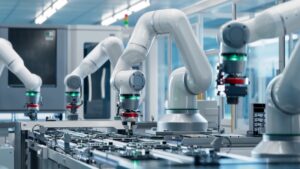Over the last century, Man has learned to utilize more and more natural resources, developing more and more ways to convert one form of energy to another.
This process is called “The Industrial Revolution”.
The Industrial Revolution is the transition to modern manufacturing methods. It began around 1769 and continued until sometime between 1820 and 1840.
The Industrial Revolution consisted of a transition from manual manufacturing methods to the use of machines, the development of manufacturing and processing methods for iron, effective use of water energy, the use of steam, the development of machining tools for metals, and more.
Apparently, wood was more convenient to process, but it had several drawbacks such as alterations of its dimensions as a result of changes in temperature and humidity, or the tendency of wooden connectors to wear and become loose. Therefore the need arose to find more durable raw materials.
The Industrial Revolution also consisted of a transition from the use of wood or other organic fuels to the use of coal.
With the advancement of the Industrial Revolution, machines with metallic parts and foundations became more and more common. Manual work methods were not only exhausting and expensive, but it was also difficult to achieve a high level of accuracy when making parts using such methods.
Therefore intense demand was created for metallic machine parts, which in turn has led to the development of several machines for cutting metal parts.
Prior to the invention of these cutting machines, metal used to be cut and processed manually with hammers, files, saws and chisels. As a result, the use of metal was very limited.
The first mechanized device was a boring machine operating on a similar principle to the one used by the modern lathe. It was constructed in 1775 in Britain by a man named John Wilkinson, with the purpose of making rifle or canon barrels from one solid piece of metal.
Wilkinson discovered that if instead of turning the drill bit itself he turned the block of metal, the barrel obtained would be much more accurate with much smaller chances to explode…
This could be said to have been the first lathe.
Shortly later, Wilkinson adjusted his device so as to achieve an additional purpose – drilling steam engine cylinders for the Boulton & Watt Company.
Right – the machining device developed by John Wilkinson for drilling cylindrical bores.
A detailed illustration of this machine can be seen here.






